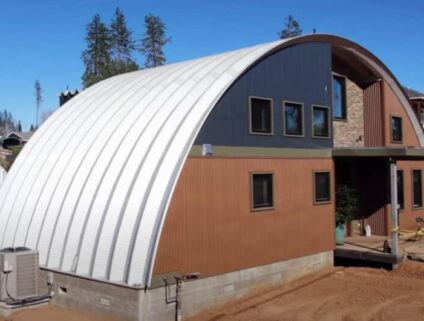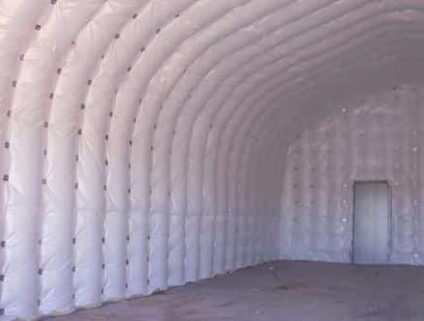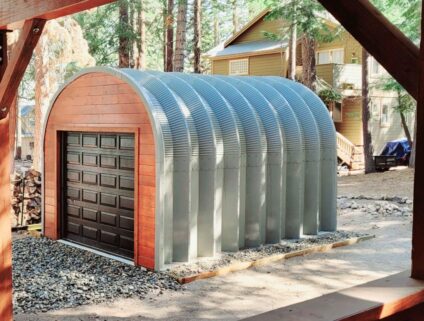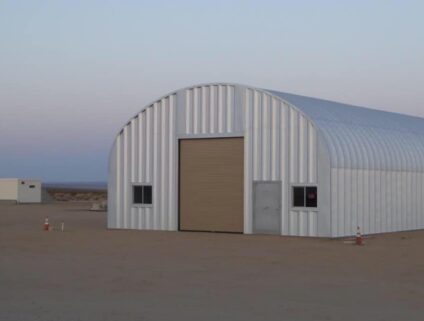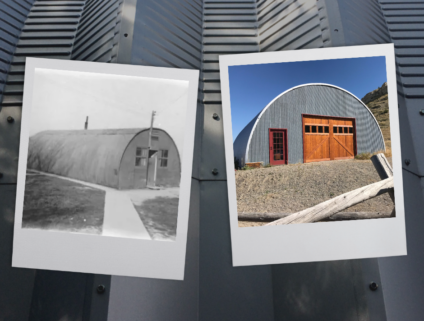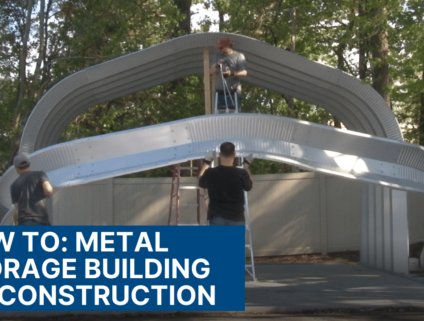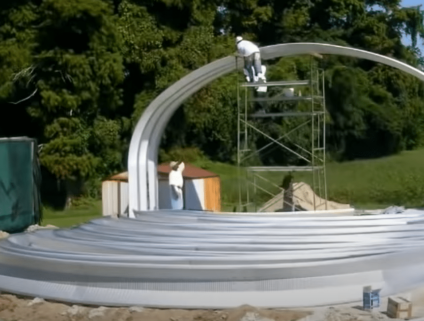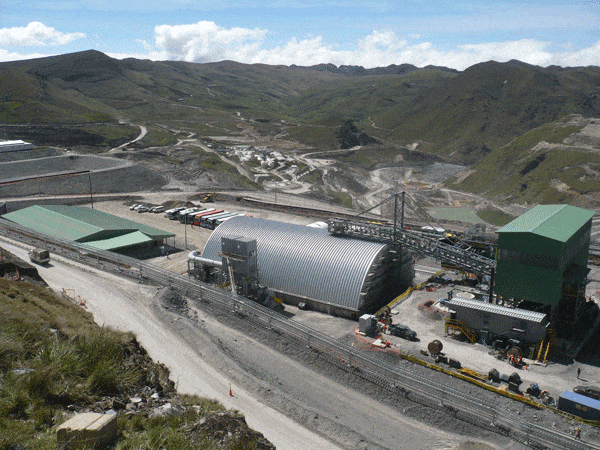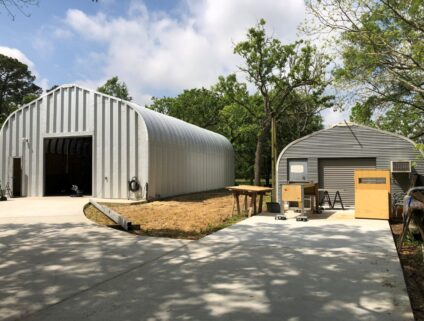Tornado-Resistant Design: Why Quonset Huts Outperform Traditional Homes
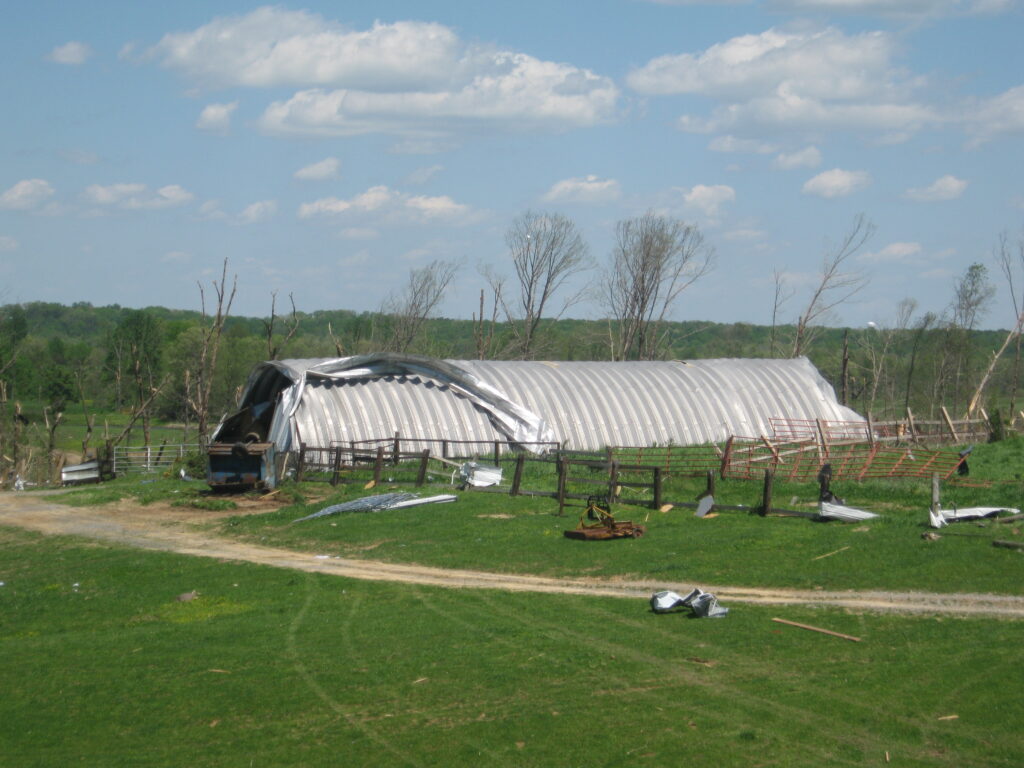
Each year, the United States experiences approximately 1,000 tornadoes, leading to around 80 fatalities and more than 1,500 injuries.
The swift and catastrophic impact of tornadoes can obliterate communities in mere moments. To safeguard your family and property, it’s crucial to understand which structures can withstand these deadly storms and what makes a tornado-safe home.
Here’s why Quonset huts provide superior protection against tornadoes compared to traditional homes.

Why Traditional Homes Fail to Withstand Tornadoes
According to Popular Mechanics Magazine, traditional houses are prone to being ripped to shreds by wind and debris is because they are not designed to take the amount of force a tornado can bring. Traditional homes often suffer catastrophic damage during tornadoes due to several key vulnerabilities:
- Structural Integrity of Materials: Traditional homes typically use wood framing and conventional roofing materials, which lack the structural reinforcement needed to withstand tornado-force winds. Wood is prone to splintering and failure under high wind pressure.
- Roof Uplift: The roof overhang of a traditional home is subject to significant uplift and sheering forces from tornado-force winds which is why you’ll see roofs ripped off of houses or severely damaged.
- Weak Points at Openings: Traditional homes often have large, unreinforced openings such as windows and doors. These openings can act as weak points, allowing high-speed wind and debris to enter and compromise the structural integrity of the building.
- Debris Impact: Tornadoes generate high-velocity debris that can impact and penetrate traditional home exteriors, exacerbating damage and increasing the risk of structural failure.
- Lack of Reinforcement: Conventional homes generally lack the reinforced materials and design features found in tornado-resistant structures, which are engineered to withstand extreme weather conditions and reduce damage from high winds.
Why Quonset Homes Are Resilient Against Tornadoes
When it comes to withstanding the ferocious forces of tornadoes, Quonset huts are strong in all the places a traditional building is weak. From the materials to the design and construction, there are a range of advantages that Quonsets have in withstanding F-5 tornados:
- Continuous Load Path: Quonset huts are constructed with curved steel frames, providing a continuous load path from the roof to the foundation because the arches that make the roof and walls are one piece bolted to the foundation. This allows for a more even distribution of force throughout the building.
- Aerodynamic Arch Design: The rounded, aerodynamic shape of Quonset huts minimizes wind resistance and reduces the risk of uplift. The design efficiently channels wind flow around the structure, preventing the pressure differences that cause roof uplift in traditional homes.
- Reinforced Materials: Made from heavy-gauge steel, Quonset huts are highly resistant to impact and penetration from debris. The material’s durability ensures that the structure remains intact even when exposed to high-velocity debris.
- Seamless Construction: The continuous, curved metal shell of Quonset huts eliminates the need for joints and seams that can be vulnerable to wind and water infiltration. This seamless construction enhances the building’s ability to withstand extreme weather conditions.
- Foundation Strength: Quonset huts are often anchored with robust foundation systems designed to handle significant lateral and vertical forces. This strong foundation secures the structure against both wind uplift and ground shifting during a tornado.
This remarkable resilience of a Quonset structure was demonstrated by the experiences of SteelMaster customer Marty Mullins and his family in Jonesville, Virginia. Marty and his family faced immense loss when an F-1 tornado with winds up to 100 mph struck their town. Their home was severely damaged, but Marty’s two high-wind-rated SteelMaster Quonset Huts remained standing, protecting valuable contents inside.
“When I looked around at my property, the destruction was indescribable except for two things: These two things would be a SteelMaster 25’ x 32’ shed purchased back in 1993 and a second 20’ x 30’ shed we bought around Thanksgiving a year ago. I really could not believe my eyes,” says Marty.
Conda Hysell of Pikeville, Tennessee, had a similar experience when a deadly E-5 tornado with winds exceeding 261 mph hit. Her home and farm were destroyed, but her high-wind-rated Quonset Hut, used for hay storage, remained intact.
SteelMaster Tornado Safe Home Certifications
SteelMaster buildings have undergone high-velocity impact testing under FEMA 320/361 and ICC-500 standards. In these tests, a 15-pound wood 2″x4″ was launched at 100 mph at one of our steel walls, simulating debris impact during a powerful storm. The building sustained minimal damage. As a result, SteelMaster buildings are classified as high-velocity hurricane zone certified and have Florida Product approval.
In the face of nature’s most destructive forces, having a tornado-resistant house is essential. The experiences of Marty Mullins and Conda Hysell illustrate how high-wind-rated structures like SteelMaster’s Quonset Huts provide durability and protection during severe weather events.
Built with corrugated steel and an innovative arch design, these structures stand resilient against extreme winds and flying debris. By choosing a tornado-resistant house kit from SteelMaster, you invest in the peace of mind that your home can withstand even the most powerful storms. With the right materials and expert engineering, building a tornado-resistant home is both accessible and crucial. Embrace the strength and security of SteelMaster’s Quonset Huts to ensure your home remains a sanctuary in any storm.
Categories
Tags


